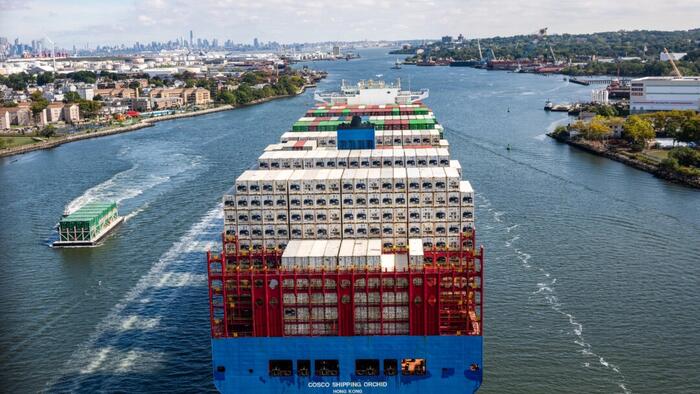The recent tentative wage agreement reached between the International Longshoremen’s Association (ILA), representing 85,000 dock and maritime workers, and the United States Maritime Alliance (USMX) has made headlines due to the pivotal role automation plays in future negotiations. Arrived at on October 3, the agreement prolongs the existing Master Contract until January 15, providing both parties with a 100-day timeframe to negotiate a new contract. A key focus is the potential implementation of automated systems for tasks traditionally undertaken by human workers, which ILA leadership seeks to limit significantly. The union has explicitly stated its desire to prohibit the automation of container-moving trucks, cranes, and gates, driven by the apprehension that increasing automation will lead to job losses.
The issue of automation in the ports has a historical context, dating back to the last ILA strike in 1977 when technological advancements were a contentious topic. Over the decades, there has been a substantial evolution in port operations, moving toward containerized shipping and mechanization, which enhanced efficiency. According to Paul Brashier, vice president of global supply chain at ITS Logistics, the shift in processes, such as the digitization of customs operations, exemplifies a broader trend towards automation. However, the ILA has historically resisted the widespread adoption of automation, which industry experts argue has rendered U.S. ports less competitive globally. Notably, a March 2024 Government Accountability Office report highlighted that the largest domestic container ports have already begun integrating automation technology. Still, hesitancy from unions, particularly in regards to granting permission for such installations, may have hampered efficiency.
Supporters of port automation argue that it is essential for maintaining competitiveness, especially as U.S. ports have fallen behind international counterparts known for their advanced technological capabilities. Notably, none of the U.S. ports ranked among the top ten in the World Bank’s Container Port Performance Index. The lack of automation has been flagged as a contributing factor in the supply chain crisis experienced in 2021. Sean Higgins, a research fellow at the Competitive Enterprise Institute, pointed out that unions, such as the International Longshore and Warehouse Union (ILWU), have actively resisted modernization efforts, leading to inefficiencies in the U.S. port system. Such resistance also raises concerns regarding the ILA’s Container Royalty fees, which are linked to manual handling of containers, further complicating the negotiations around automation.
Union apprehensions about automation extend beyond immediate job loss fears. In June, the ILA’s halt on talks to prevent automatic gate systems installation at a Mobile, Alabama port exemplified a broader concern. Union members express skepticism about the asserted benefits of automation, believing that it often leads to job cuts without delivering cost savings on goods, a sentiment echoed in conversations surrounding recent strikes in various sectors over AI and automation. While there is a call for protective measures amidst technological changes, unions across various industries are grappling with the reality that automation is evolving. For instance, the United Auto Workers expressed similar fears regarding job security as the industry transitions to electric vehicles, foreseeing a reduction in workforce needs.
Research indicates that while automation can displace jobs temporarily, it may also pave the way for new job opportunities as industries adapt. A 2022 report suggested that the automation of international container terminals in the U.S. led to job losses, yet often results in the emergence of different roles in the longer term. Industry experts, like Brashier, acknowledge that while the prospect of losing jobs is alarming, automation can enhance operational efficiencies, ultimately benefiting the industry and economy. Some ports are proactively addressing these fears by developing training programs to assist dockworkers in gaining skills relevant to an increasingly automated environment. The ILWU’s establishment of training centers in collaboration with the Pacific Maritime Association demonstrates an effort to equip workers for the transitions anticipated in their roles.
The interplay between labor unions and technological advancements continues to be a complex dialogue characterized by tension and fear of obsolescence. Critics argue that unions that resist automation may be stifling the necessary modernization of U.S. ports, which impedes competitive advantage against international ports. Eric Clark, a portfolio manager, highlights that the continuous pushback from unions could compel a reaction toward enforced automation. As negotiations unfold, it seems crucial for the ILA to balance the desire for job security with the pressing need for improved port infrastructure and efficiency. Continued discussions around automation will undoubtedly shape the future of labor relations in the maritime sector and the ongoing viability of U.S. ports in a global context.

